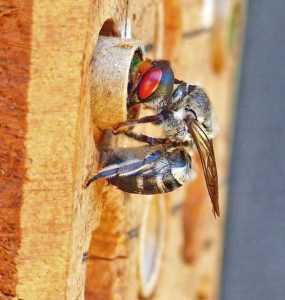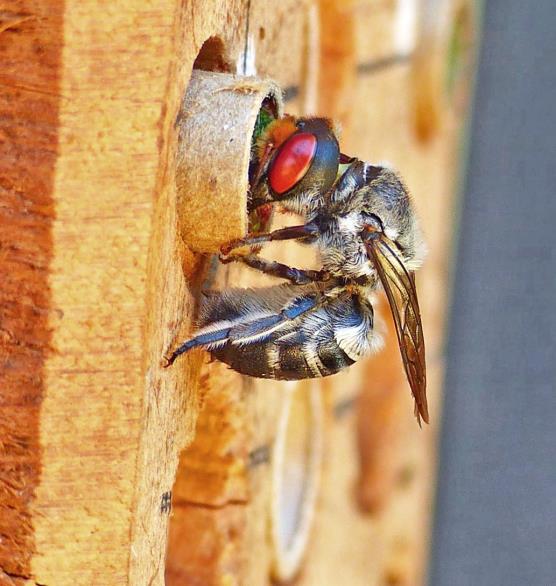The ANBA is delighted to announce that we have been successful in securing the Federal Government’s Bushfire Recovery Grant! The project, titled ‘Bee hotels to boost bees after bushfires’ will be the first in the world to use bee hotels to augment bees in areas where fires have destroyed their nesting habitat.
The project, devised by Kit Prendergast, involves both intensive on the ground surveys as well as an Australia-wide citizen science effort equipping people across the country in fire-impacted are-as with the knowledge and skills for boosting bee populations with supplementary habitat in the form of bee hotels. Kit as well as Rachele Wilson will provide presentations and assistance to community members on the community bee hotel monitoring.

Bee hotels are artificial nesting substrates that mimic the premade holes and cavities in trees created by wood-boring beetles that cavitynesting bees, such as most Megachilids and Hylaeines, and some Euryglossines, nest in. Intense fires can destroy the natural nesting substrates, and whilst flowers may bloom following fire, it can take years for trees to get old enough to be populated by diverse assemblages of wood-boring beetles. Nesting habitat is a vital part of the equation for recovering pollinators, for even if they can move into fire-affected landscapes and for-age on flowering regrowth, they will be unable to establish without nesting resources. Cavity-nesting bees are known to be most affected by fires from re-search conducted in other countries (research has not been conducted in Australia to date), tied to the destruction of the nesting substrates they require. Our study will be the first of its kind to trial bee hotels as a recovery option. They have been used effectively to date to boost native bee populations in agricultural landscapes, with success.
Kit will be undertaking a comprehensive activities in the southwest western Australian biodiversity hotspot. Here habitat has been burnt, and whilst they are not so large as to mean recovery is impossible, the ability for native bee populations to re-establish is hampered by the lack of nesting substrates. Bee hotels will be installed in August and monitored monthly during bee activity season to check occupancy, and observing bees visiting flowers in the surroundings to determine if the cavity-nesting taxa are present in the area (so as to be able to gauge the effectiveness of the bee hotels, distinguishing between not being used, vs. the cavity-nesting species not being present), and provide an estimation of whether their numbers are increasing following the installation of bee hotels. Three fire-affected sites will serve as controls, where no bee hotels are installed, to enable a comparison of whether bee hotels are significantly boosting bee populations.
We are also enlisting Australians to join in our recovery efforts! Kit Prendergast’s ebook, “Creating a Ha-ven for Native Bees” on evidence-based bee conservation which includes details on effective bee hotel design and the preferred flora, will be sent to Men’s sheds and Landcare groups in fire affected regions, along with a prototype bee hotels. We would like citi-zens in or near fire affected areas to install bee hotels and when visiting the sites to take a georeferenced photo of bee hotels and upload to an iNaturalist project “Bee hotels to boost Australian bees after the bushfires”.
Stay tuned, as Kit will create a Facebook page “Bee hotels to boost bees after bushfires.” We will be keeping everyone posted about our project, and hope to see your involvement too!

